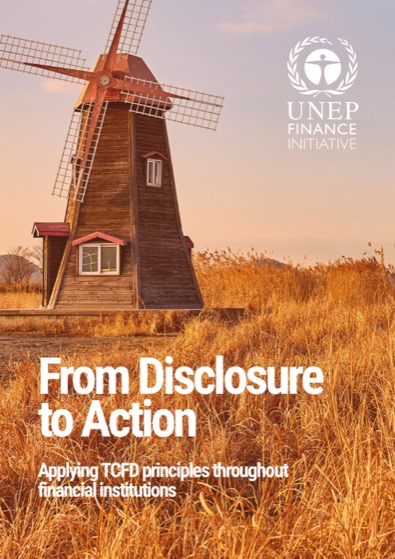From Disclosure to Action: Applying TCFD principles throughout financial institutions
Recent reports from the Network for Greening the Financial System (NGFS) and the Commodities Futures Trading Commission (CFTC) indicate how the financial sector has increasingly recognized climate risk as a financial risk. Financial institutions must respond to the threat of climate change by identifying, assessing, and managing their climate risks. The disclosures recommended by the TCFD provide a common reference point and framework for firms seeking a systematic way to approach their climate risks.
In UNEP FI’s TCFD Banking program, thirty-nine global financial institutions across six continents worked to improve their climate risk assessments and disclosures. The participating banks recognized that effective climate risk management demands disclosure be accompanied by the integration of climate risk principles throughout an organization.
This report provides a stock-take on the myriad ways financial institutions are incorporating climate risk considerations into their businesses and risk operations. Guided by the TCFD framework, this top-to-bottom perspective on climate risk applications explores board and executive strategic planning, risk analysis and reporting, and business line engagement with clients.
As part of this work, UNEP FI conducted a study of the TCFD Banking program participants to provide a window into current financial sector practices regarding climate risk management, analysis, and reporting. Several TCFD Banking program participants also contributed case studies to the report, which go into significant detail regarding specific applications of climate risk at those institutions.
In addition to these observations, this report provides concrete and actionable guidance on how to successfully integrate climate risk throughout a financial institution. This guidance will help industry participants more effectively meet the challenges of a rapidly changing world.



